The Calendar element allows you to embed a dynamic appointment booking widget into your funnel page. This widget seamlessly integrates with your pre-created Event Types from the Appointments app in your ClickFunnels workspace. With this element, users can effortlessly book their preferred time slots directly on your funnel page, ensuring a streamlined booking experience. In this article, you will learn how to use the Calendar element.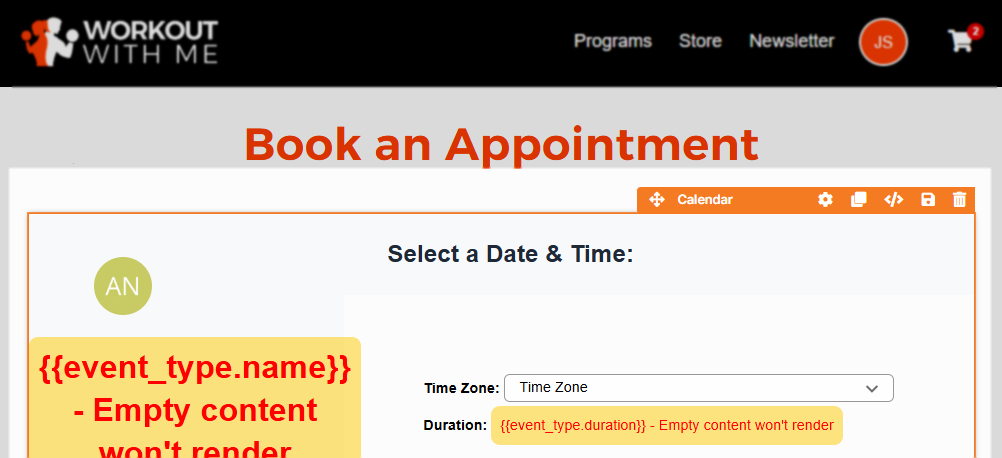
Requirements
An active ClickFunnels account
A funnel page
An Event Type created in the Appointments app in your workspace
Creating an Event Type
From the left-hand main menu, click the Appointments app.
Select Event Types.
Click the Add Event Type button to create a new event.
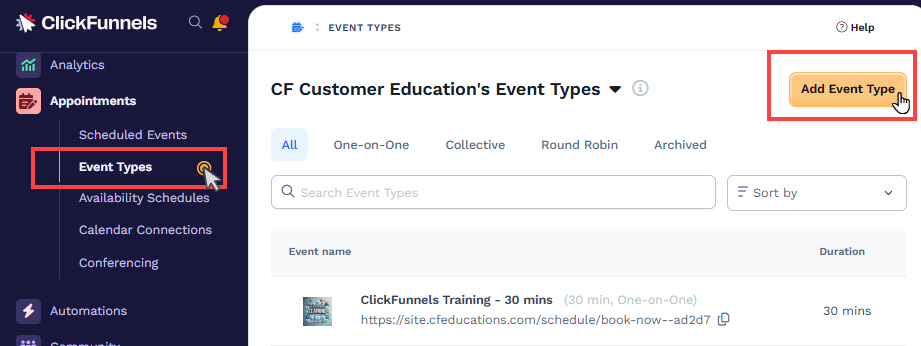
Choose the Event Type you wish to create. The available options are:
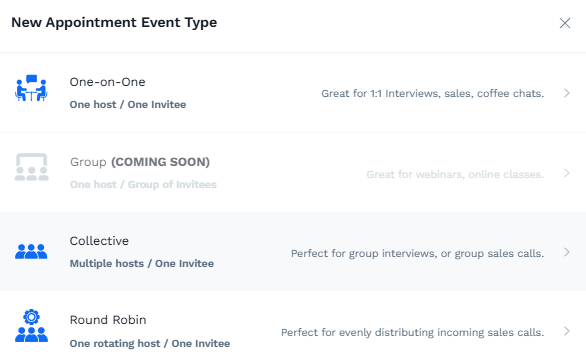
One-on-One: This event type is ideal for 1:1 interviews, sales meetings, or casual coffee chats. It involves one host and one invitee.
Group (COMING SOON): Suitable for webinars or online classes, this event type will involve one host and a group of invitees.
Collective: Perfect for group interviews or group sales calls, this event type involves multiple hosts meeting with one invitee.
Round Robin: Ideal for evenly distributing incoming sales calls, this event type features one rotating host meeting with one invitee.
Attaching the Appointment Event Type in the Funnel Step
Navigate to the funnel step where you want to use the appointment event type.
Click the three-dot icon on the funnel step (such as an Opt-in page), and select Manage Event Types.
.png)
In the sidebar, click Attach Event and select the event you want to link to this funnel step. Once you've done this, click Update.
Adding a Calendar Element in the Page Editor
Inside the page editor, add a Section where you want to place the element.
Add a Row within that section.
Click the orange + Plus or Add New Element button inside the row to insert a new element.
From the Misc (Miscellaneous) category, select the Calendar element.

Once the Calendar element is added, you can customize its appearance to fit your page design.
Tips:
The Calendar is a fully integrated widget that displays key booking components, such as event details, a calendar, and a contact form. To ensure it displays correctly and avoids content distortion, consider placing this element within a one-column row to provide adequate space.
Customizing the Calendar Element
When you hover over an element, its border will be highlighted in orange. To access an element's settings, click on the gear ⚙️ icon or click directly on the element.
Top Margin
 The Top Margin setting lets you control the space between the current container (section, row, flex, and element) and the container directly above it. If no previous container exists, the margin will be applied relative to the parent container. If no preceding container is added, the Body will be the parent.
The Top Margin setting lets you control the space between the current container (section, row, flex, and element) and the container directly above it. If no previous container exists, the margin will be applied relative to the parent container. If no preceding container is added, the Body will be the parent.
You can set top margin values independently for desktop and mobile by using the device icons (px) or percentage (%) to create consistent spacing across screen sizes.
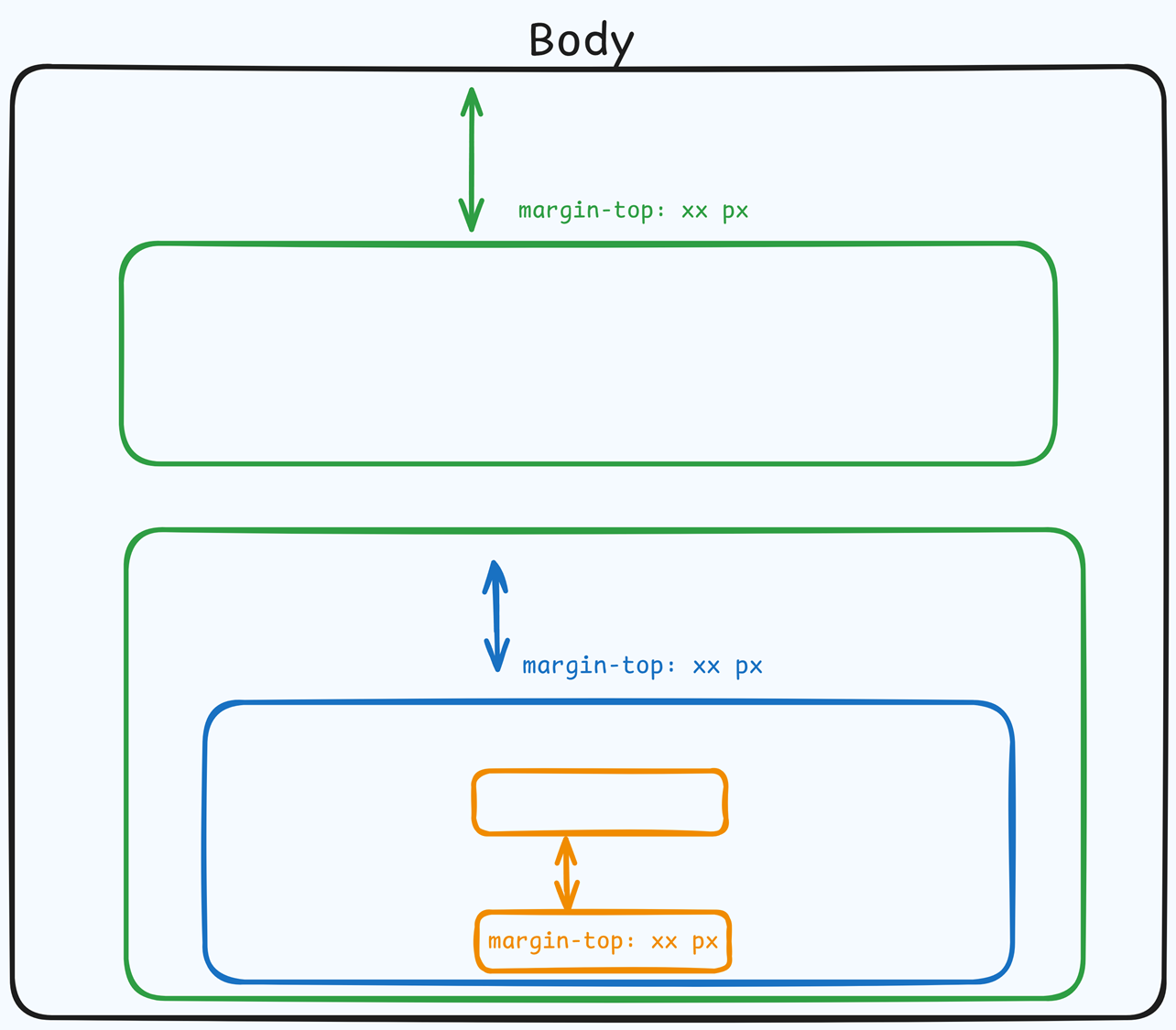
Control Panel
The Control Panel appears at the bottom of every container(Section, Row, Flex, and Element) in the page editor, offering quick access to essential settings and actions for that container. Here’s what each icon represents:.png)
ALL: The container will be visible on all devices (desktop, tablet, and mobile).
Desktop (
🖥️ ) Icon: The container will only be visible in desktop view.Mobile (
📱 ) Icon: The container will only be visible in mobile view.Eye (
👁️ ) Icon: Use this to hide the container from the page. Once clicked, the container will be hidden in the editor but not deleted. You can click the Layout menu in the top navigation bar to find the hidden containers. Select All, Desktop, or Mobile icon to unhide in the editor.Code (</>) Icon: This icon opens the code editor, where you can insert custom CSS or JavaScript code to modify the container's behavior or styling.
Trash (
🗑️ ) Icon: Removes the container from the page editor entirely.
Advanced Settings
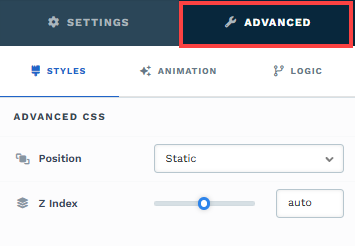
To further customize your container (section, row, column, and element), ClickFunnels provides Advanced settings that allow you to control style, advanced CSS, animation, and rendering logic. We’ve separated these advanced features into dedicated articles to avoid overwhelming you with too much content in one place and to keep our documentation concise. Explore the following resources for more details:
Advanced Settings - Customize Styles: Learn how to populate contents dynamically, position containers, and apply z-index.
Advanced Settings - Customize Animation: Learn how to add animations, control entry and exit effects, and adjust animation delay.
Advanced Settings - Customize Logic: Learn how to apply conditional logic to elements and add custom attributes.
Previewing
When an Event Type is attached to the funnel step and the Calendar element is added, you can use the Preview
This preview provides a representation of how your Calendar appears: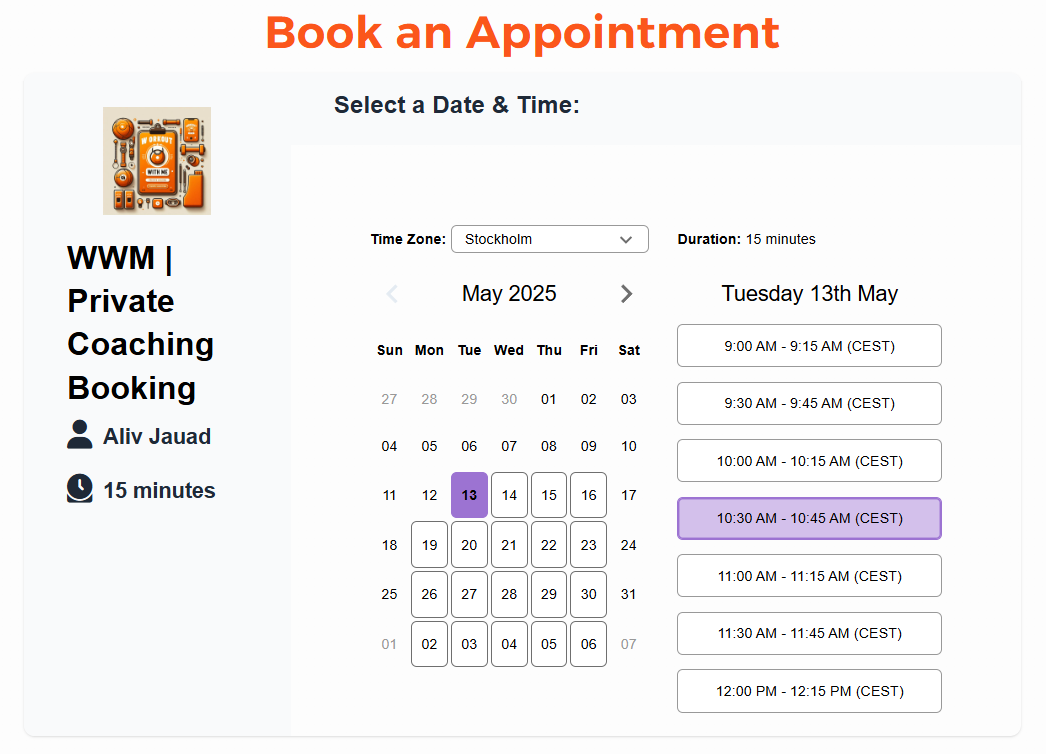
Limitations
Exclusive to Funnel Pages: The Calendar element is designed to work exclusively within funnel pages. It cannot be used on the site, landing pages, blogs, courses, or other pages of your workspace.
No Payment Processing for Paid Events: If your Event Type requires payment, the Calendar element will not handle payment processing during the booking. Instead, you can use one of the following alternative methods:
Option 2: Embed the booking form directly on your webpage.
Option 3: Share the direct event link with your audience for seamless access.
For detailed instructions on these methods, refer to the article Appointments - How to Publish Your ClickFunnels Appointments.
Automatic Funnel Navigation After Booking: When using the Calendar element in a funnel, users will automatically be redirected to the next funnel step after booking. The “After Booking” settings defined in the “Event Type” will not take priority. If you prefer not to show the next funnel step after booking, consider publishing your event using Option 2 or Option 3.
One Scheduler Per Page: Only one Calendar element can function properly on a single page. Adding multiple scheduler elements may lead to display or functionality issues.